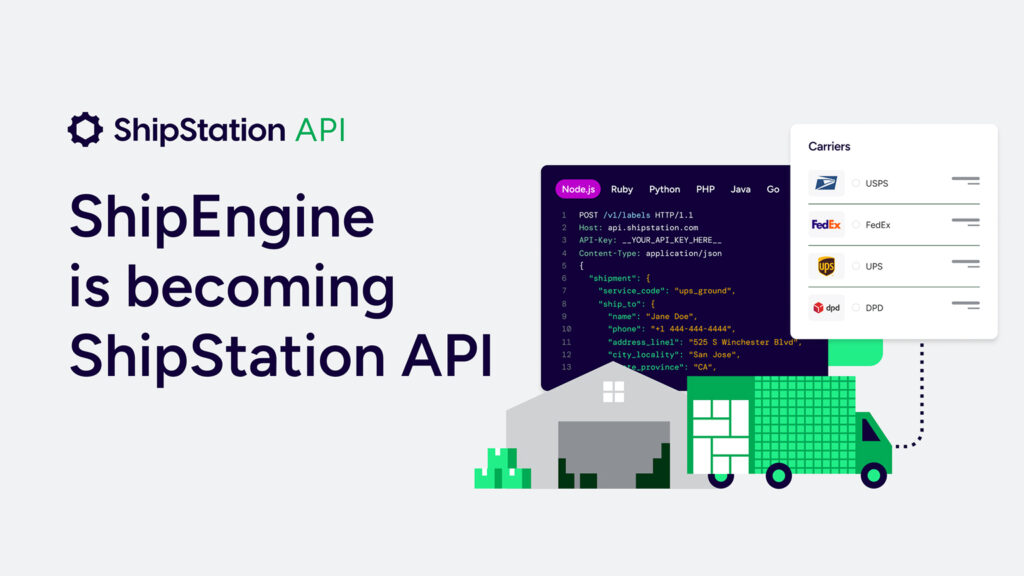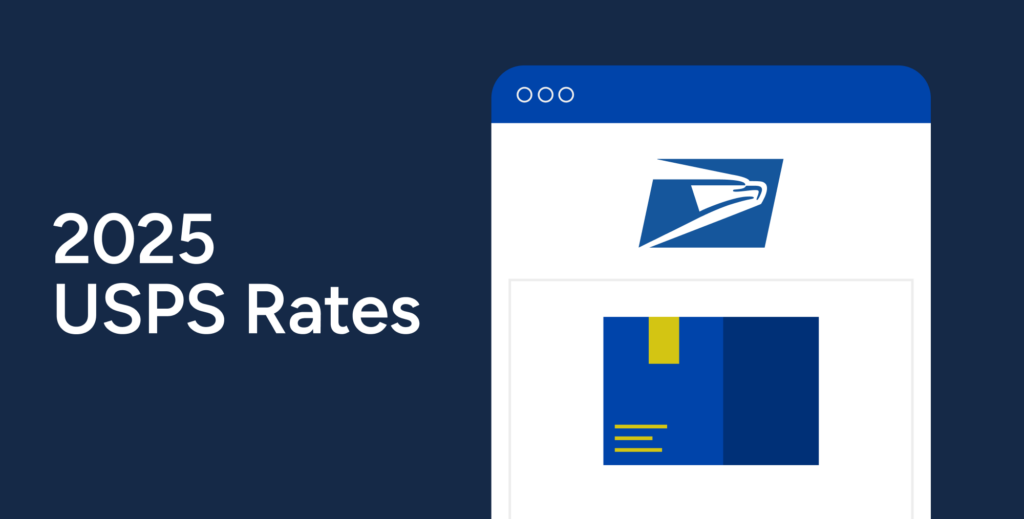ShipEngine vs. EasyPost: A Comprehensive Comparison of Leading Shipping Solutions

In recent years, the world of logistics has undergone a dramatic transformation. As ecommerce continues its relentless growth, businesses are striving to optimize their shipping processes to gain a competitive edge and stand out in an increasingly crowded marketplace. More and more shippers are turning to third-party solutions that offer advanced shipping functionalities, such as API integration, automated label printing, real-time tracking, and much more.
Today, we’ll delve into a comparative analysis of two notable shipping API platforms: ShipEngine and EasyPost. We’ll compare and contrast the features, pricing, user experience, and integrations of these two leading solutions to give you a clearer perspective on which one might suit your business needs better.
Understanding ShipEngine: Features, Shipping Capabilities, and More
ShipEngine is a robust shipping API that empowers businesses to streamline their shipping process. This platform focuses on providing comprehensive shipping solutions with a variety of features catering to different business needs.
Core features of ShipEngine include order management, shipping carrier integrations, label printing, tracking, and comprehensive reporting. It enables real-time rate comparisons across multiple carriers, ensuring you get the best possible shipping rates. Additionally, ShipEngine supports both domestic and international shipping, providing a global shipping solution for businesses.
The platform is designed for businesses of all sizes, especially those with high-volume shipping needs. One of ShipEngine’s unique selling points is its direct integration with major carriers such as FedEx, UPS, and USPS, allowing businesses to access discounted shipping rates.
A Look at EasyPost: Key Features, Functionality, and Target Market
EasyPost is another industry-leading shipping API that provides efficient and scalable solutions. Like ShipEngine, EasyPost offers a host of features such as label printing, tracking, rate comparisons, and order management.
The platform offers extensive shipping capabilities, supporting both domestic and international shipping. What sets EasyPost apart is its carrier insurance option, allowing users to insure their packages for their full value, providing an extra layer of security for high-value shipments.
EasyPost targets a diverse range of businesses, from startups to large enterprises, ensuring scalable solutions that grow with the business. An advantage of EasyPost is its easy-to-use API, offering developers flexibility and customization options for integrating shipping functionalities into their applications.
Feature Comparison: ShipEngine vs. EasyPost
Both ShipEngine and EasyPost offer a range of features to streamline the shipping process. However, their implementation and focus areas differ slightly.
Order Management
When it comes to order management, both ShipEngine and EasyPost offer solutions that can make a significant difference in streamlining shipping operations.
ShipEngine: The platform excels in providing in-depth order and shipping rules customization. This allows businesses to establish specific rules for handling orders based on factors such as weight, destination, and product type, among others. This level of customization gives businesses greater control over their shipping operations. However, it may require a bit more effort to set up and fine-tune the rules to best suit the business needs.
EasyPost: While EasyPost also provides efficient order management solutions, it’s designed for quick setup and ease of use. For businesses that prefer simplicity over customization, EasyPost might be more appealing. However, the trade-off is a less granular control compared to what ShipEngine offers.
Shipping Carrier Integrations
Having access to a wide range of shipping carriers is vital for businesses to provide efficient shipping options.
ShipEngine: One of the standout features is its direct integration with numerous shipping carriers. This not only broadens the options but also provides access to discounted shipping rates, which can lead to significant cost savings. However, businesses may need to navigate through a wider range of options to select the best carriers for their needs.
EasyPost: EasyPost too integrates with a plethora of shipping carriers. It provides ease and simplicity in setup. However, it might not offer the same level of discounted rates as ShipEngine due to the nature of its integrations.
Label Printing
Label printing is a fundamental aspect of shipping and logistics.
ShipEngine: ShipEngine supports label printing, making it easy to print labels for various carriers. However, the options for label formats might be limited compared to EasyPost.
EasyPost: This is where EasyPost distinguishes itself by supporting multiple label formats. This can be particularly useful for businesses that have diverse shipping needs or preferences for specific label types. However, this might also mean that businesses need to spend more time configuring the right label formats.
Tracking
Reliable tracking is essential for businesses to monitor shipments and for customer satisfaction.
ShipEngine: Provides reliable tracking services, keeping businesses and customers informed about the status of shipments.
EasyPost: Takes tracking a notch higher by offering an advanced tracking system. This system provides more detailed information about the package’s journey, which can enhance the customer experience. However, for some businesses, this level of detail might be more than what is actually needed and could potentially lead to information overload.
Reporting
Effective reporting helps businesses make data-driven decisions to optimize shipping operations.
ShipEngine: ShipEngine provides more detailed analytics and reports, which can be invaluable for businesses looking to delve deeper into shipping data to optimize operations. However, this might also mean that the interface is more complex and takes longer to master.
EasyPost: EasyPost also provides reporting features, but they may not be as in-depth as ShipEngine. This could be advantageous for smaller businesses or those who prefer a simpler interface for quick insights. However, larger businesses or those that rely heavily on data analysis might find the reporting features less adequate.
Pricing Structures: A Cost Analysis
Analyzing the pricing structures of ShipEngine and EasyPost, it’s evident that both are designed to accommodate a wide range of businesses and their respective shipping volumes. Understanding the subtle differences in their pricing structures, though, can help businesses choose the platform that offers the best value for their specific needs.
ShipEngine: ShipEngine employs a flexible pricing model to cater to businesses of all sizes. They offer a pay-as-you-go plan, which is ideal for startups and small businesses that may have a lower shipping volume initially. As the shipping volume increases, ShipEngine offers customized pricing plans that can provide better value. The availability of a free trial is another advantage, as it allows potential customers to test out the platform’s functionalities without any upfront commitment. However, it’s important to note that ShipEngine’s pricing model is based on API calls, which means that businesses with a high number of API requests may incur additional costs.
EasyPost: Like ShipEngine, EasyPost also offers a flexible pricing model, including tiered pricing based on shipping volume. Businesses with a high volume of shipments might find better value in EasyPost’s tiered pricing, as it often reduces per-label cost with increasing volume. However, their pricing per shipment can be slightly higher compared to ShipEngine. One important consideration is that EasyPost’s pricing structure doesn’t consider the number of API calls, which can be advantageous for businesses with a high frequency of API interactions.
In terms of overall cost-effectiveness and value, both platforms offer flexible pricing models to accommodate businesses of different sizes and shipping volumes. ShipEngine’s strength lies in its competitive pricing for high-volume shippers and the flexibility offered by its pay-as-you-go and custom pricing plans. EasyPost, on the other hand, may be more suitable for businesses that require a high level of API interaction or those who prefer a straightforward tiered pricing structure.
In the end, the right choice will depend on a business’s specific shipping volume, frequency of API calls, and budget. It’s crucial to consider all these factors and understand the fine print of each platform’s pricing model to ensure that the chosen solution provides the best value.
Third-Party Integrations
In today’s interconnected business environment, the ability to integrate with other platforms and tools is a crucial aspect of any shipping solution. Both ShipEngine and EasyPost have extensive integrations with popular ecommerce platforms, marketplaces, and other tools, enabling businesses to build a cohesive and efficient shipping workflow.
ShipEngine: ShipEngine boasts an impressive range of integrations with leading ecommerce platforms like Shopify, WooCommerce, Magento, and BigCommerce, among others. This allows businesses to seamlessly sync their orders and manage shipping directly from these platforms. They also integrate with top marketplaces like Amazon and eBay, ensuring businesses selling on these platforms can efficiently manage their shipping needs. Additionally, ShipEngine connects with inventory management and customer service tools, thereby streamlining the entire ecommerce process. However, due to the extensive range of integrations, businesses may need to spend some time identifying and setting up the most relevant integrations for their needs.
One unique aspect of ShipEngine’s ecosystem is its integration with Stamps.com, providing businesses with access to USPS services and discounts, which can result in significant cost savings. This integration might be particularly useful for businesses shipping a high volume of packages domestically in the US.
EasyPost: Like ShipEngine, EasyPost also supports a broad range of integrations with popular e-commerce platforms and marketplaces, providing businesses with flexibility and convenience in managing their shipping operations. Their API is also developer-friendly, which means businesses can easily integrate their existing systems with EasyPost, potentially saving time and resources. However, EasyPost might not offer the same level of integration with other tools involved in the shipping process, such as inventory management and customer service tools, such as ShipEngine.
One of EasyPost’s notable partnerships is with BoxC Logistics, which provides businesses with access to international shipping services to more than 200 countries. This partnership could be a significant advantage for businesses looking to expand their global reach.
In summary, both ShipEngine and EasyPost offer robust integration ecosystems, each with its unique strengths and considerations. Businesses seeking a solution with extensive integration options, particularly with other ecommerce tools, might find ShipEngine’s offering more comprehensive. On the other hand, businesses prioritizing simplicity and global shipping capabilities might find EasyPost’s ecosystem more appealing.
Wrapping it up: Key Points Discussed
To summarize, both ShipEngine and EasyPost offer comprehensive shipping solutions, but they cater to different needs and have their unique strengths.
In this comparison between ShipEngine and EasyPost, we delved into several critical areas – order management, shipping carrier integrations, label printing, tracking, reporting, pricing structure, and integrations and ecosystems.
Order Management: ShipEngine offers a more detailed customization for order management, giving businesses a higher level of control, whereas EasyPost focuses on simplicity and ease of use.
Shipping Carrier Integrations: ShipEngine’s direct integrations offer access to discounted rates, while EasyPost also provides a plethora of carrier integrations with a focus on simplicity.
Label Printing: Both platforms support label printing, but EasyPost supports multiple label formats, providing businesses with more flexibility.
Tracking: Both platforms provide reliable tracking services, but EasyPost’s tracking system provides a more detailed package journey.
Reporting: ShipEngine has an edge in providing more detailed analytics and reports for optimizing shipping operations. EasyPost also offers reporting, but it may not be as in-depth.
Pricing Structure: Both platforms offer flexible pricing based on shipping volume. ShipEngine provides a free trial and custom pricing for high-volume shippers and charges based on API calls. EasyPost has a tiered pricing model that doesn’t consider the number of API calls, which can be advantageous for businesses with a high frequency of API interactions.
Integrations and Ecosystem: Both platforms integrate with major e-commerce platforms and marketplaces. ShipEngine has a unique partnership with Stamps.com and offers a more extensive range of integrations, including inventory management and customer service tools. EasyPost offers a developer-friendly API and a notable partnership with BoxC Logistics for international shipping services.
In conclusion, both ShipEngine and EasyPost present strong capabilities in the shipping and logistics landscape, each with distinctive strengths that can be advantageous for different business needs.
ShipEngine, with its advanced customization, extensive integrations, and flexible pricing, offers a comprehensive solution that can cater to businesses looking for detailed control over their shipping operations. Its integrations extend beyond just ecommerce platforms and marketplaces to cover inventory management and customer service tools, creating a more cohesive workflow. Additionally, the pricing model caters to businesses of varying sizes and shipping volumes, which provides room for growth and scalability.
EasyPost, on the other hand, stands out with its simplicity and user-friendliness, making it a suitable choice for businesses that prefer an easy-to-use platform. Its support for multiple label formats and advanced tracking details can enhance operational efficiency and customer experience. Moreover, the partnership with BoxC Logistics extends its international shipping capabilities, which can be a significant advantage for businesses aiming for global reach.
The choice between the two platforms, therefore, comes down to the specific needs, preferences, and growth plans of your business. If you value detailed customization, a robust suite of integrations, and a flexible pricing model that allows room for scalability, ShipEngine could be a preferred choice. Conversely, if you prioritize simplicity, a straightforward tiered pricing structure, and advanced tracking capabilities, EasyPost may be more suitable.
Regardless of the choice you make, remember that the right shipping solution can not only streamline your operations but also significantly enhance your customer experience and, in turn, your business growth and profitability. Choose wisely, keeping in mind your business needs both today and in the future.


